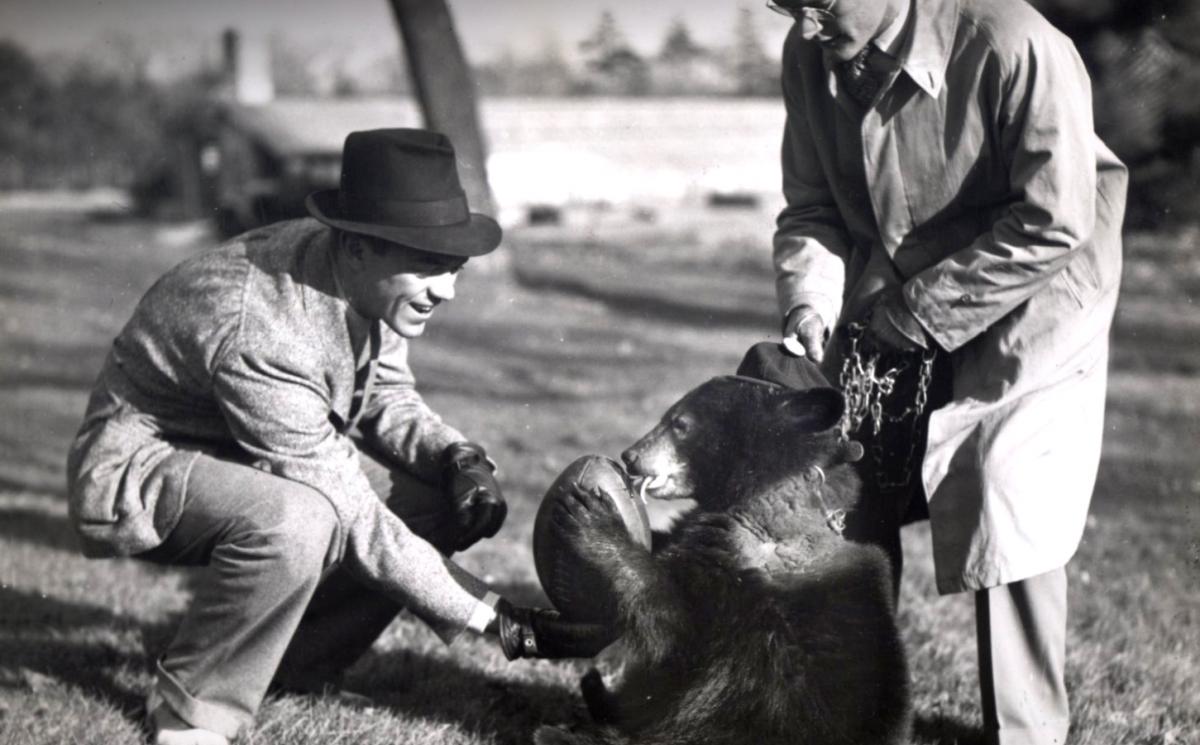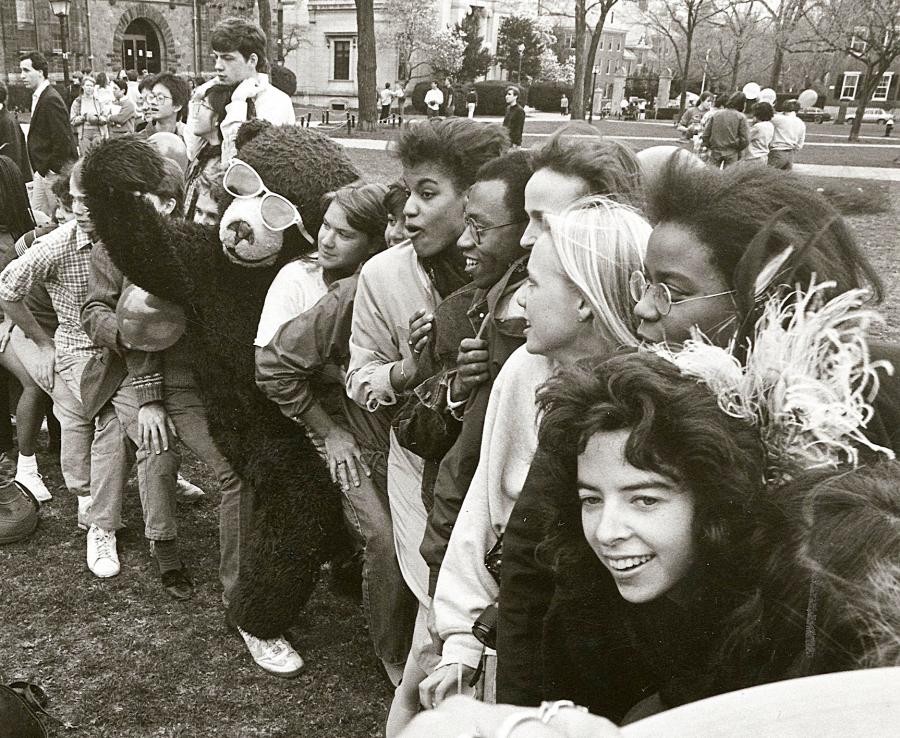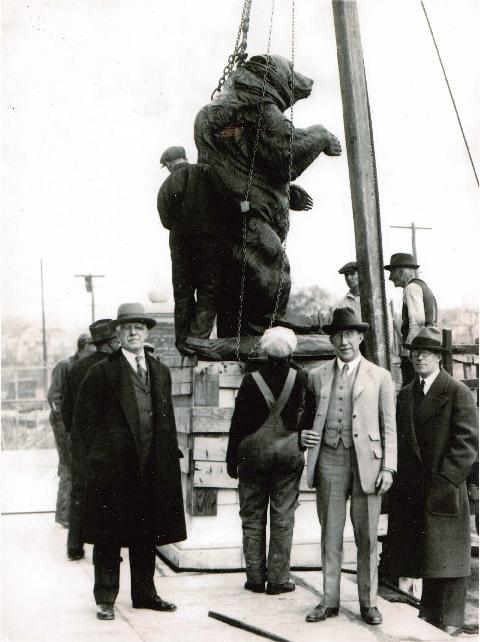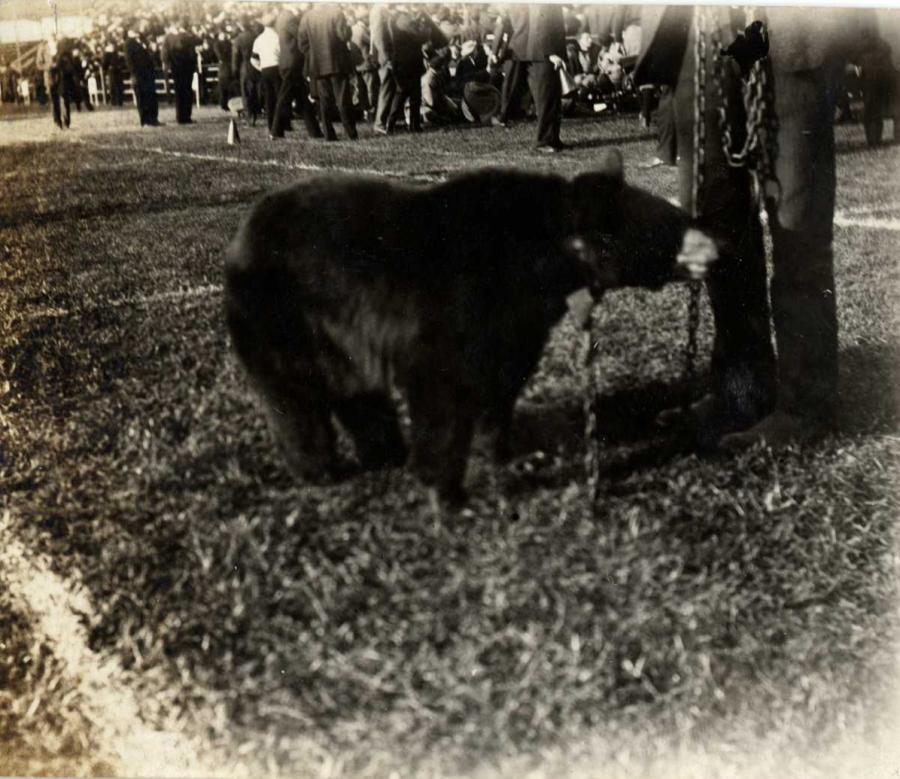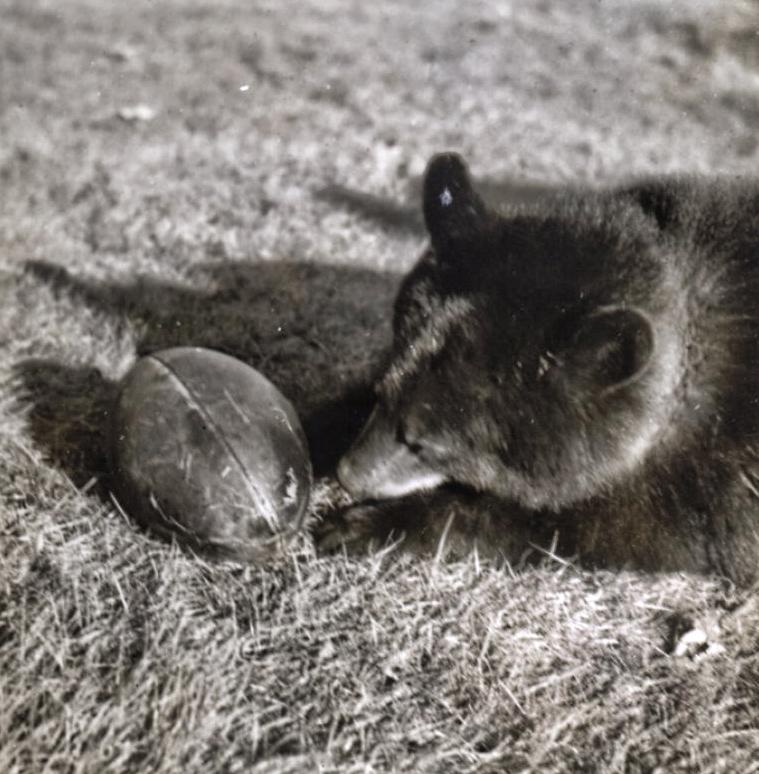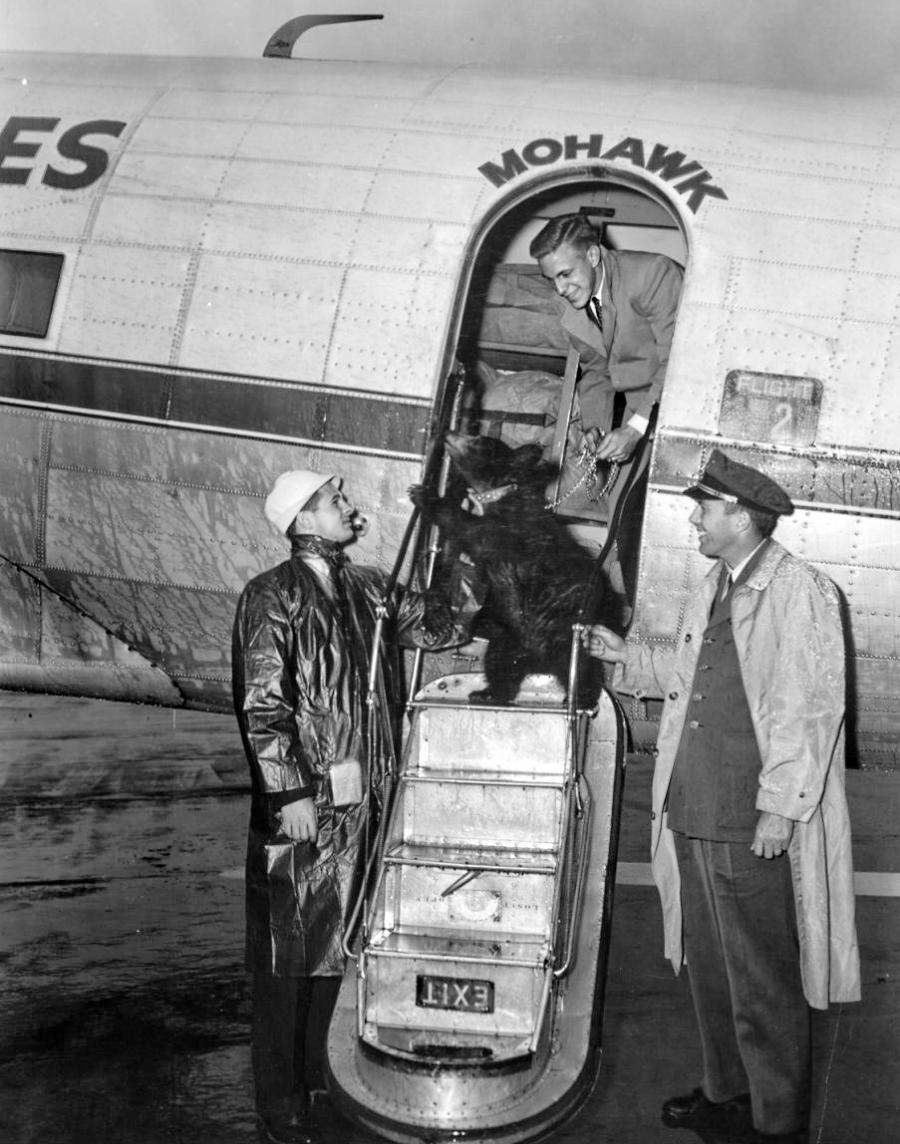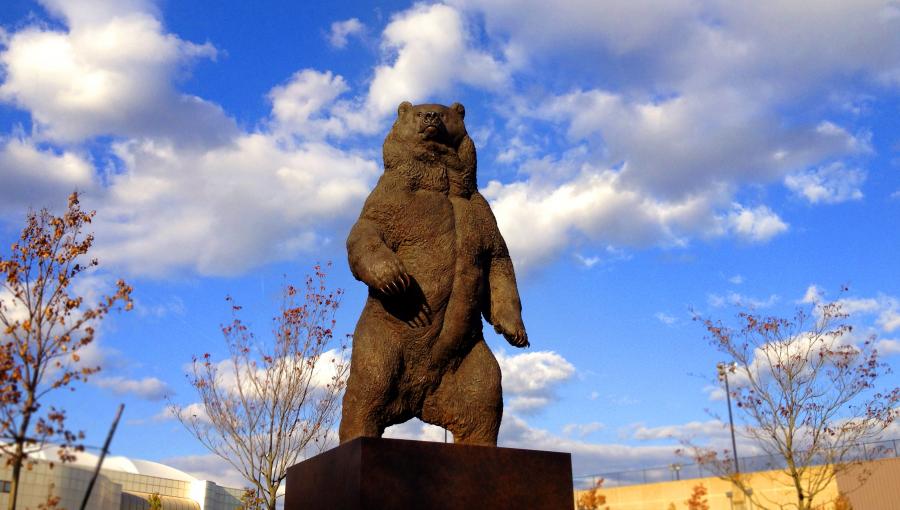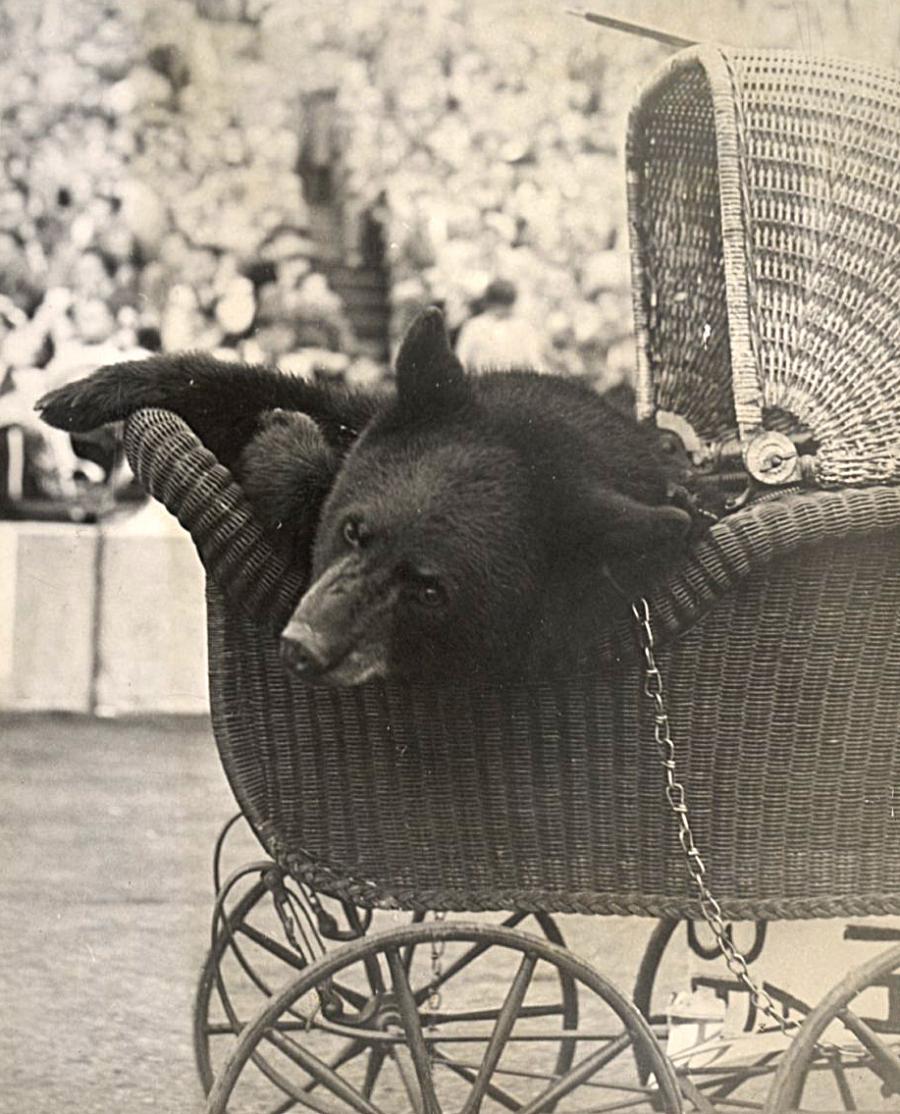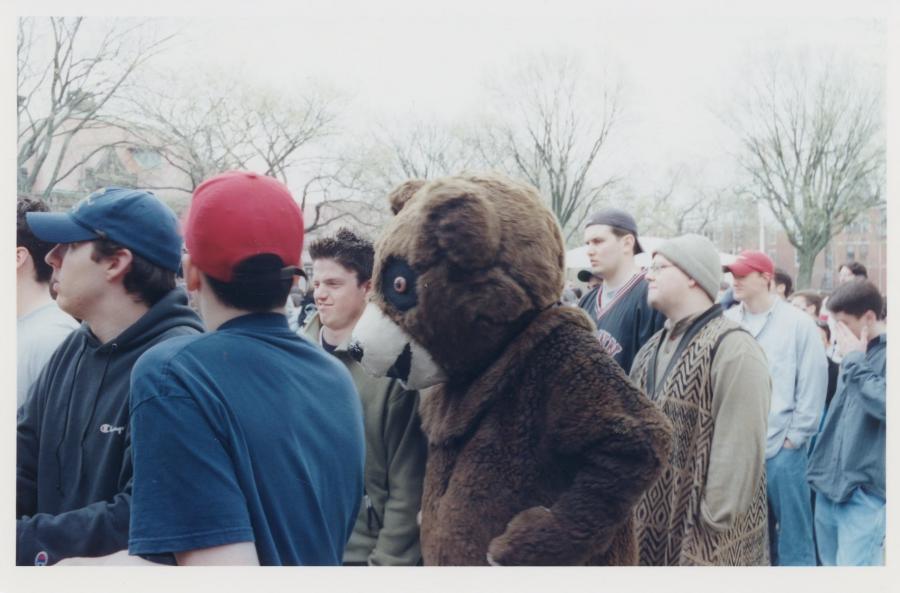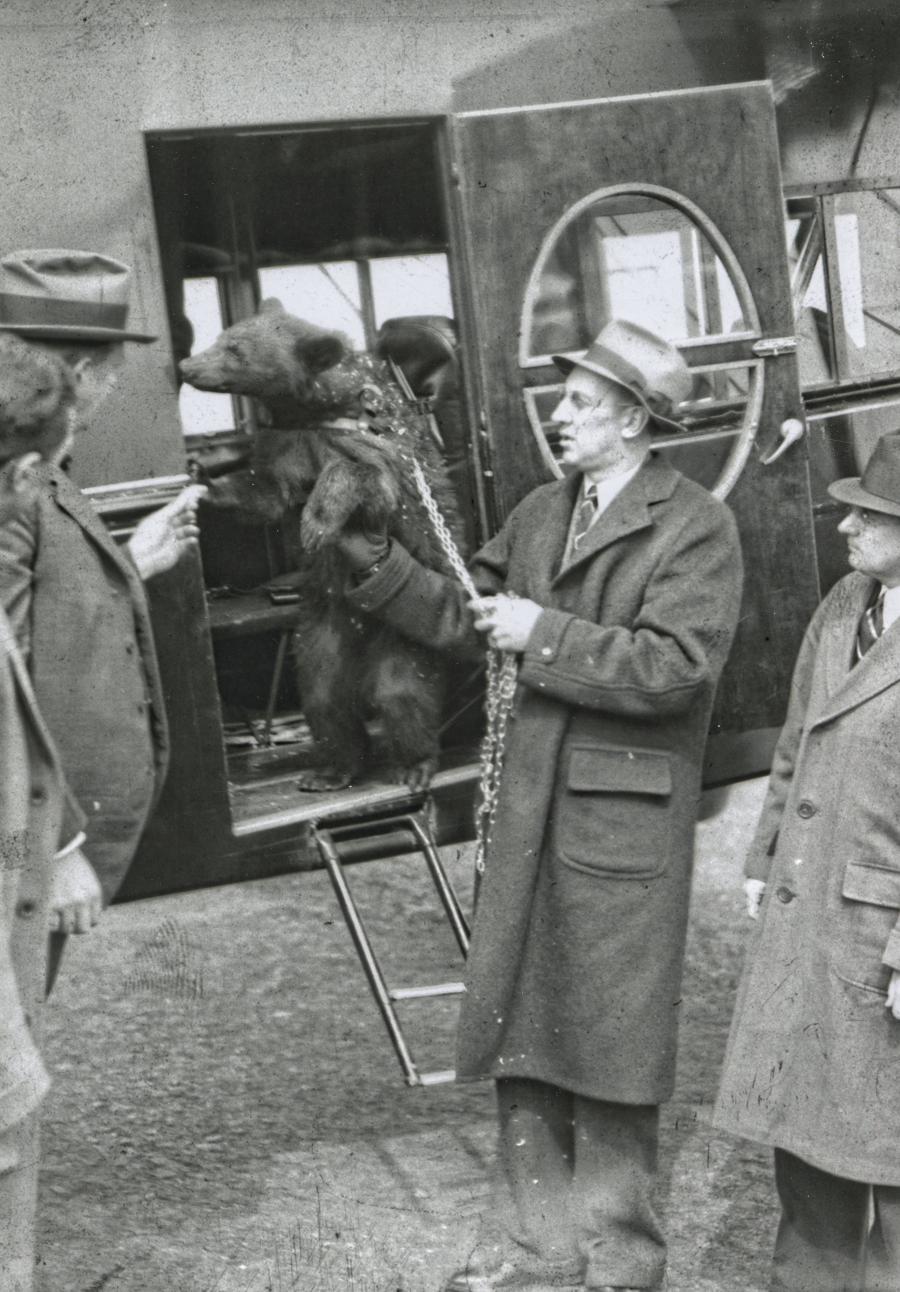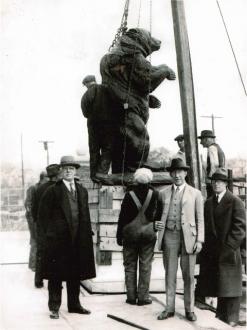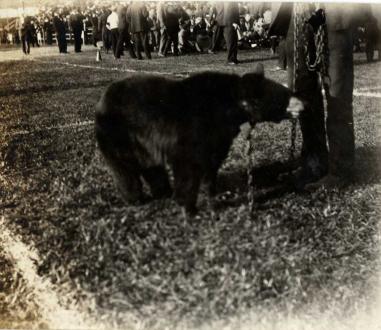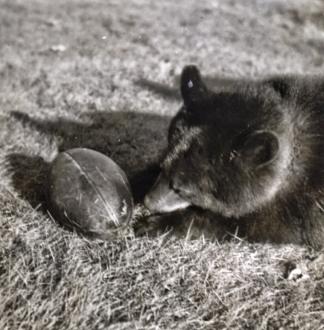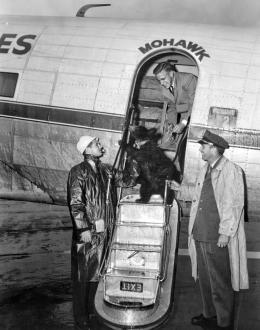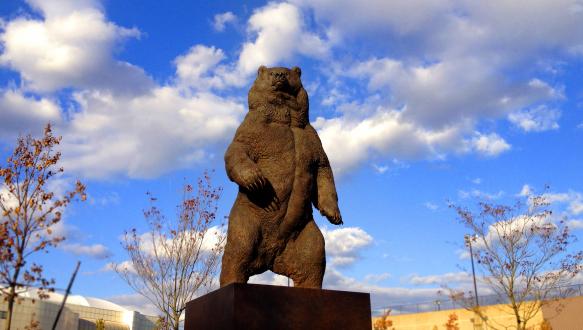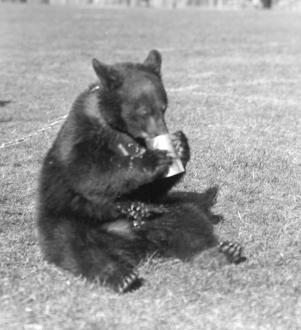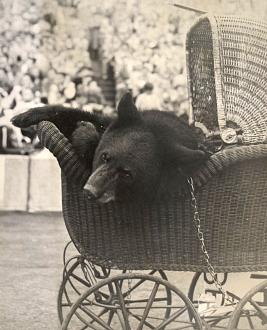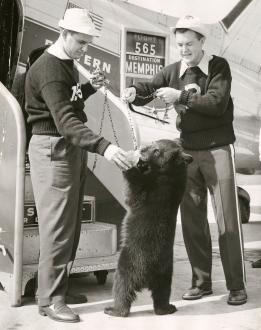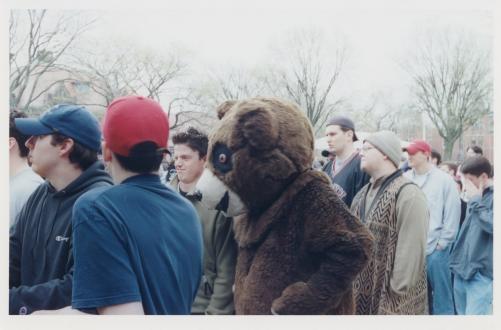At the dawn of the 20th century, the hunt was on for a symbol to represent Brown’s fledgling athletic teams, which for lack of a better term had been labeled Hilltoppers or portrayed as colonial Puritans by the press. In 1902, an attempt to find a suitable mascot proved to be a painful failure. Before the Harvard football game, Isaac Goff, a local real estate executive, presented a brown and white burro to the student body. After arriving on campus from Colorado Springs, the burro traveled to Soldiers Field for the game. Shy and docile, the animal was terrified by the crowd noise and derision of the Crimson fans. The burro was quickly retired from service, and it would be three more seasons before another mascot would take to the gridiron.
It was Theodore Francis Green, Class of 1887 (Rhode Island’s governor from 1933–37 and U.S. Senator from 1937–1961) who finally put the “Bruno” in Brunonia. While searching for a counterbalance to the Yale Bulldog and Princeton Tiger, Green found his answer in the Brown Bear. After he mounted a bear head in the trophy room of the new student union (now Faunce House) on January 20, 1904, the powerful symbol gained wide support. Sketches of bears soon graced the pages of Liber Brunensis, the Brown Bear was celebrated in fight songs, and bear statuary eventually appeared on campus. In the fall of 1905, the Celebration Committee (a student group of the time, specifically charged with building spirit and excitement around Brown vs. Dartmouth game) decided to have a live bear at the Dartmouth game; W. Douglas Swaffield, Class of 1906, was appointed to find one. The bear that Swaffield acquired at Roger Williams Park, named Dinks, refused to leave his cage on game day. Out stepped the valiant Helen, his mate, who received a standing ovation from Brown fans when she entered Hampton Park and stared down the hostile Dartmouth cheerleaders. The Brown gridders did not prevail in the November 25th clash, but the live bear mascot tradition was born.
Over the years, there have been several other notable bears that have left their paw imprints on Brown athletic lore. In 1921, a bear died after ingesting chemicals while outside his cage in the Biology building; his brother Bruno II was then purchased by the Class of 1922 as a Spring Day mascot. Also known as Brunonia, this sociable bear served for seven years, growing to 500 pounds before “retiring” after the 1928 Thanksgiving Day game.
Bruno III, a gift from Maine’s governor, was flown to Boston’s Logan Airport in April 1936 and presented to Brown President Barbour at the spring banquet of the Boston Brown Club. In an interesting twist, mascots from other colleges were invited to the affair. Apparently, Bruno’s guests were well-behaved, with no skirmishes reported.
Bruno III, a feisty female like Helen, gained national fame that fall for a bold escape from her handlers at the football game with Connecticut. After bolting, she climbed a large elm in the stadium and watched the game from her lofty perch, refusing to return to earth. A growing crowd soon became more interested in the standoff than the one-sided game on the field. The drama ended hours later when a Slater Park Zoo employee climbed the tree, plied Bruno with milk and sugar, and slipped a rope around her neck. After the bear’s unwilling descent, a police force, armed with poles, forced the snarling escapee into her cage, ending her mascot career.
Perhaps the most remarkable example of Bruno’s importance to campus culture occurred in December 1939 with the sudden death of Bruno V. This young cub’s funeral service drew hundreds to the College Green, where trumpets played taps with the flag at half staff. After the ceremony, a station wagon draped in black conveyed the casket to Aldrich Field for burial. Just weeks before, Bruno had entertained the fans across the street at Brown Field.
In the 1960s, growing sensitivity to the treatment of animals signaled the end of Brown’s long and colorful succession of live bears. Once again Brown students donned bear costumes, just as they had at Springfield in 1906, the year after Helen’s historic debut. Brown mascot history was made again when in 1980 a woman climbed into the bear suit. Barbara Weiss ’83, a later-day Helen, also was the first female mascot in the Ivy League. Today, after more than a century, the Brown Bear tradition remains alive and well. Bruno is still cheering, echoing the spirited line from the old Brown Cheering Song; “And the Bear growls like thunder...”

